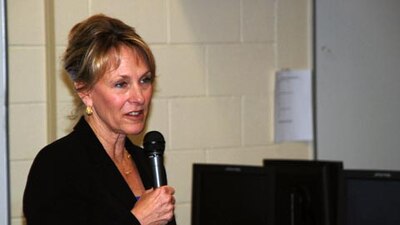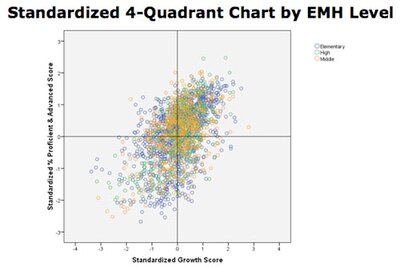This story was updated on Nov. 3, 2009
Nearly 28,000 Colorado students attend the state’s most struggling schools, the campuses education leaders hope to target for improvement if the state wins a share of the $4.5 billion federal Race to the Top competition.

Along with proposals for improving standards and testing, teacher quality and use of data, states applying for R2T are required to submit plans for how they will improve the lowest-performing 5 percent of schools.
The volunteer committee that is working on Colorado’s plan for struggling schools held its last meeting Friday at the Mapleton School District’s Skyline Campus, polishing up a proposal that suggests “overstaffing” for targeted schools, extra funding for their students and use of school closures as a last resort.
Richard Wenning, associate commissioner of education, briefed the group on research the department has been doing to identify the 5 percent of Colorado schools that are the lowest performing.
There are 95 of those schools, Wenning said, enrolling about 4 percent of all students in the state. The schools were selected based on test scores, academic growth rates and other factors. Wenning said the schools aren’t being identified by name so as not to be “punitive.”
Key facts about Colorado’s lowest 5 percent include:
- 50.5 percent are elementary schools30 percent are alternative schoolsThe most common size is about 300 students
- The 95 schools are in 34 of the state’s 178 districts
- 17 percent of the schools are in rural areas
- 43 percent are not Title I-designated schools, which Wenning said was something of a surprise
- The struggling schools have high percentages of poor and minority students, but not English language learners
- 42 percent of the struggling schools are in just four districts – Denver, Pueblo City, Jefferson County and Mapleton, with DPS accounting for nearly 20 percent
- More than 50 percent of the struggling schools are in the Denver metro area, followed by 20 percent in the Pikes Peak region
The schools were selected from an overall group of 1,896 based on an index developed from 2007-09 status and growth data for CSAP reading and math tests. (Schools with fewer than 20 valid CSAP records were excluded.)

The group approved a draft plan intended to ensure “there are no chronically low performing schools in Colorado in 10 years.”
Among the methods proposed to achieve that are a “Turnaround Corps” of educators that would move from school to school, development of a knowledge database that schools could use to learn best practices and creation of a variety of support organizations that can be called in to help struggling schools.
The plan also suggests that weighted per-pupil funding should go to students in the lowest 5 percent, initially from R2T money and later from other federal funds or reallocation of state funding. The money would follow students when they move to other schools.
The U.S. Department of Education’s R2T guidelines list four options for struggling schools: Turnaround, which includes replacing the principal and half the staff; Restart, closing a school and reopening it with outside management; Transformation, a comprehensive improvement of staff effectiveness, instruction and administration; and Closure/Consolidation.
The committee’s draft plan reads, “The closure/consolidation model should only be employed when there is space in and transportation to high-performing schools for all students in the close low-performing schools.”
The other three committees crafting R2T also completed their work this week. The proposals, along with comments from other organizations and individuals, are being combined by a writing team of consultants into the final proposal. A final meeting for all four groups will be held Nov. 13 at the Capitol. The state is expected to file its application in January.
Lt. Gov. Barbara O’Brien, who is coordinated the state’s R2T bid, kicked off Friday’s committee meeting, saying, “Even if we don’t win the race, the results of your work will live on in our schools.” O’Brien said she hoped the collaborative process Colorado has used to draft its proposal “will give us a leg up.”
